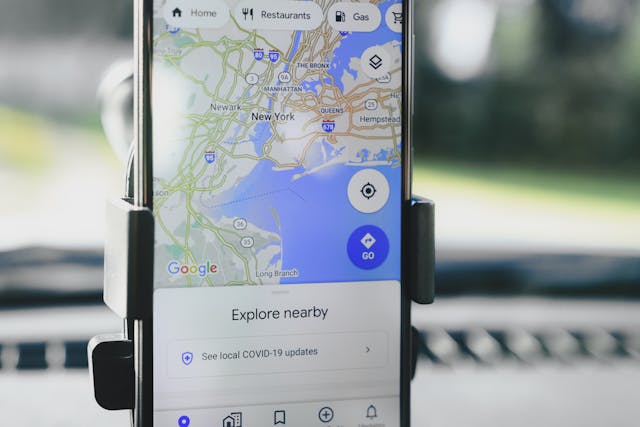Introduction
Text messages play a significant role in our daily lives, serving as an essential form of communication. But have you ever wondered, where are text messages stored on Android devices? Understanding the text message storage location can help you with backup, recovery, and privacy management. In this comprehensive guide, we’ll explore the Android SMS storage path, how to access your text messages, and best practices for managing them effectively.
1. Why Knowing Text Message Storage Location is Important
Backup and Recovery
Knowing the text message storage location allows you to create backups and recover lost or deleted messages when needed. This knowledge is particularly useful if you’re switching devices or dealing with unexpected data loss. Backups help maintain continuity, especially if your device gets damaged or lost.
Privacy and Security
Understanding where your messages are stored helps you manage sensitive information more securely. You can ensure no personal data is left behind when selling or recycling your Android device. Additionally, secure storage prevents unauthorized access to your messages, ensuring your private conversations remain private.
2. How Android Handles Text Message Storage
The Role of Messaging Apps
On Android devices, text messages are primarily managed by messaging apps such as Google Messages or the default SMS app provided by the manufacturer. These apps store messages in a specific text message database location within the device’s internal storage. This ensures efficient retrieval and display of messages within the app.
SMS vs. MMS Storage
While SMS (Short Message Service) messages are stored as plain text, MMS (Multimedia Messaging Service) messages may include media files such as images or videos. These media files are saved in separate folders linked to the message database, typically under the device’s media storage directory.
3. Default Locations for Text Messages on Android
Internal Storage: System Folders
Text messages on Android are stored in the device’s internal storage. Typically, they are saved in the default message storage on Android under the directory:
/data/data/com.android.providers.telephony/databases/mmssms.db
This database file contains all your SMS and MMS messages. However, accessing this folder directly requires root access due to Android’s security protocols. Root access allows advanced users to view and modify system files, but it should be done cautiously to avoid damaging the device’s functionality.
Database Files and Their Formats
The text message data is stored in SQLite database files, making it efficient for apps to query and manage. The Android SMS storage path ensures the data remains secure and organized. These database files are compact and optimized for quick read-and-write operations by the messaging app.
4. How to Access Text Message Storage on Android
Using File Managers
For non-rooted devices, third-party file managers can help you locate certain files. However, due to Android’s security restrictions, direct access to the message database is limited. Instead, you can use these tools to explore other accessible storage directories.
Accessing Android’s Data Folder

To access the precise Android SMS storage path, you will need a rooted device. Once rooted, follow these steps:
- Install a root-enabled file explorer app, such as Root Explorer.
- Navigate to /data/data/com.android.providers.telephony/databases/.
- Locate the mmssms.db file to view your text message database.
Be cautious when modifying or exporting these files, as improper handling can corrupt your data.
5. Backing Up Text Messages
Built-in Backup Options
Many Android devices offer built-in backup solutions that include SMS data. For instance:
- Google Drive Backup: Allows you to sync text messages to your Google account. This is an easy and reliable way to preserve your messages.
- Manufacturer-Specific Tools: Brands like Samsung provide options to back up SMS to their cloud services, such as Samsung Cloud.
Third-Party Backup Apps
Apps like SMS Backup & Restore enable you to export and save your text messages in XML format. This makes it convenient to move data between devices or recover messages after a factory reset. These apps often include scheduling features, ensuring your backups are always up to date.
6. Recovering Deleted Text Messages
Can You Recover Deleted SMS?
Yes, it’s possible to recover deleted messages from Android storage if the data has not been overwritten. Deleted messages remain in the text message database location until new data replaces them. Acting quickly improves your chances of successful recovery.
Tools for Message Recovery
Several third-party recovery tools can scan the Android SMS storage path for deleted files. Some popular options include:
- Dr.Fone: A comprehensive data recovery tool for Android devices.
- Tenorshare UltData: Specializes in retrieving lost messages and other data types.
These tools often require connecting your device to a computer and following guided steps to retrieve lost messages.
7. FAQs About Android Text Message Storage
Do All Android Phones Store Messages the Same Way?
No, while most Android devices follow the standard Android SMS storage path, custom skins like Samsung One UI or Xiaomi’s MIUI may have slight variations in storage methods. However, the underlying principles of SMS storage remain consistent.
Can You Move Text Messages to an SD Card?
Yes, you can export your messages using third-party apps and save them to an SD card for additional storage or transfer purposes. This is a practical way to free up internal storage while keeping your messages accessible.
What Happens to Messages After a Factory Reset?
A factory reset wipes the internal storage, including the text message database. To prevent data loss, ensure you backup your messages before performing a reset.
Conclusion
Knowing where text messages are stored on Android is crucial for effective data management, whether you’re looking to back up, recover, or secure your messages. By understanding the text message storage location, you can take full control of your messaging data. From accessing the Android SMS storage path to using recovery tools, this guide equips you with all the information you need to manage your messages effectively.
Make sure to handle your text message data responsibly and use trusted tools when accessing or modifying system files. With this knowledge, you’re well on your way to mastering SMS storage on Android!



